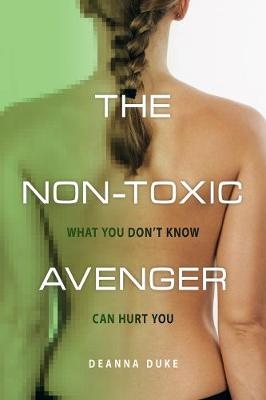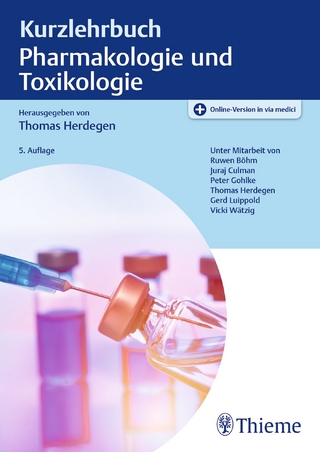
The Non-Toxic Avenger
New Society Publishers (Verlag)
978-0-86571-692-6 (ISBN)
- Titel ist leider vergriffen;
keine Neuauflage - Artikel merken
Most of us turn a blind eye to the startling array of chemicals lurking in everything from shampoo to baby bottles to the money in our wallets, choosing to believe that government agencies ensure the safety of the products we wear, use, ingest, and breathe in daily. Yet the standards for product safety in North America lag far behind those of other countries. We frequently hear that a substance we've relied on for years turns out to have serious effects on our health, the environment, or both. After coming to terms with the fact that the autism and cancer which had impacted her family were most likely the result of environmental toxins, author Deanna Duke undertook a mission to dramatically reduce her family's chemical exposure. She committed to drastically reducing the levels of all known chemicals in both her home and work environments, using the help of body burden testing to see what effect, if any, she was able to have on the level of toxins in her body. Follow Deanna's journey as she uncovers how insidious and invasive environmental toxins are. Learn about your day-to-day chemical exposure, the implications for your health, and what you can do about it.
And find out whether the author's quest is mission impossible, or whether she is ultimately able to improve her family's health by taking steps towards leading a chemical-free life. Deanna L. Duke is an environmental writer, urban homesteader, and author of the highly acclaimed environmental blog The Crunchy Chicken.
Deanna Duke: is an environmental writer, urban homesteader, and author of the highly acclaimed environmental blog, The Crunchy Chicken (www.thecrunchychicken.com). The focus of her work is in educating others on environmental issues and explaining how she and her family have not only converted to a low-impact lifestyle, but also reduced their exposure to toxic chemicals in their home, work and school environments. In addition to her blog, Deanna also writes as an Expert Urban Homesteader for Mother Earth News Online and is the Personal Care Consultant for the eco-makeover television show, Mission: Sustainable.
Part I: Becoming the Nontoxic Avenger
I set out on this project knowing that removing all the toxins in our environment will be a difficult task to achieve and also knowing that, regardless of my efforts, there are some toxins I won’t be able to affect.
Health
I went in to this project primarily for health reasons. Toxins in our environment most likely have attributed to the health issues my family has to deal with daily.
Environmental impact
As an environmentalist, knowing that the products that people use like pesticides, herbicides, plasticizers, anti-bacterials, bleaching agents and a whole host of other chemicals have a severely negative impact on not only the flora and fauna, but also on waterways and our air, makes me want to limit what we contribute to this contamination.
Studies show
In this chapter, I focus on the studies done on the more alarming chemicals and introduce some of the issues that will be explored in the rest of the book.
Next steps in environmentalism
I have tried over the last several years to severely limit my family’s impact on the environment and reduce our carbon footprint.
Preventative medicine
We are already struggling with autism and cancer in the family. In doing this project I was curious to see if there would be any improvement in my son’s behavioral and neurological issues. Would living a chemical-free life help push my husband’s cancer into remission.
Answer three basic questions
I want to be able to answer three basic questions at the end of this project. Can it be done? How hard is it? Does it matter?
Testing, testing, 123
In order to get an idea of what kind of impact I can make by removing all these toxins, the most effective way of seeing any progress is to get tested. What kind of toxin load am I carrying around to begin with?
Falling for candles
With daylight hours decreasing in the fall, now is the time we usually start burning more candles, but we are careful about the kinds we choose.
Nail polish and removers
There has been a huge movement lately to remove some of the nastier chemicals from nail polish. Toxins to focus on: Phthalates, toluene, DBP, formaldehyde, acetone, benzophenone-3, fragrance, ethyl acetate, parabens, DEHP
Tapping the tap water
I get our water tested to see what we are drinking. I also purchase a filter that removes an impressive amount of contaminants. I will also test our filtered water to double check and make sure the filter is doing its job.
Sick building syndrome
My kids’ school building poses much more of a challenge. It is an older building, most likely with lead paint and asbestos. The fear of spreading disease, particularly in the age of swine flu, has brought with it the age of antibacterials, hand sanitizers and serious cleaning chemicals
Toxins to focus on: Lead, mercury, triclosan, pesticides, chlorine, fluoride, PBDEs
Visiting the dentist
You wouldn’t think that there are toxins in your toothpaste, but there are several things to watch out for even in your tooth floss.
Sticky situation
In this chapter, I inspect all our storage containers and dishware for BPA, ridding the house of plastic plates, cups and bowls and ditching the non-stick pans.
HEPA vacuum cleaner, air filter and plants
Toxins like PDBE (flame retardants from furniture, electronics and clothing) and lead can settle into the dust in the house, so keeping the house clean by using a HEPA vacuum cleaner and air purifier helps keep those chemicals out of our bodies.
Toxins to focus on: Lead, PDBE
Putting out the flames
Since PDBEs are added to our kids’ pajamas, we will be going through all of their pajamas and replacing them with natural cotton and other fibers.
Getting scared on Halloween
Between vinyl decorations, masks, toxic face paints and candles and non-stick coating wrapping all those candy bars, Halloween is scary indeed.
A hairy situation
In this section, I focus on shampoos, conditioners and styling products.
Going au naturale
Hair coloring systems are so problematic they deserve their own chapter. Toxins to focus on: PPDs, ammonia, parabens, lead, fragrance
Foods we eat
I explore how difficult it is to “eat clean”, especially with kids and when eating out and while travelling. I also go over macrobiotic and vegetarian diets as a method of low-toxic eating. Finally, I discuss the possible link between food additives and colorings and ADHD and migraines.
Soaping up
Finding and replacing our bar soap and liquid hand soap with natural soap is a relatively easy change. What isn’t so easy is finding a facial cleanser that doesn’t contain some nasty ingredients
It’s the pits
Antiperspirant. I go in search for an alternative and end up with something totally nontoxic and homemade that works just as well.
Going bare
Don’t look too closely at what is in canned shaving cream and depilatories.
Lube and lines
In this chapter I ditch my favorite department store, chemical-laden moisturizers and anti-aging products for coconut oil.
Sunscreen and self-tanners
Trying to find a sunscreen that doesn’t contain toxins and absorbers in them and is easy to apply and doesn’t make you look like Casper is a challenge.
Putting on your face
In spite of the myriad of toxins in basically 99% of cosmetics in the marketplace, there are some alternatives.
Death by medication
I want to focus on some of the toxins that we ingest in our daily lives through the use of over the counter medications for pain relief and cold and flu symptoms as well as prescription medications
Cancer for Christmas
Artificial trees are made of vinyl and are full of lead and other contaminants that are dangerous.
Good gift giving
This year will be a challenge in trying to find gifts for the kids that aren’t laced with plasticizers and phthalates, PVC and other plastics.
Detox
There is a lot of information out there regarding detoxing without a matching large body of evidence backing it up
Love my carpet
The health risks of carpets including mold, dust mites, animal dander) and pesticides.
Beds, pillows and furniture
In this section I investigate what other kind of toxins may be lurking in our mattresses and pillows.
Testing the toys
With lead in toys being a recent and ongoing fear, I'll focus on making sure that all of my kids’ toys are safe.
Cleaning products, bleach and drain cleaners
In this chapter I look closely at the ingredients in these often used products, look for alternatives and see how they shape up.
Lawn and garden
The health and environmental implications of pesticides and herbicides.
Work building
With all the electronic equipment in our workspaces, the exposure to PBDEs is high.
Part II: What’s the verdict?
Final testing
I get retested for the same toxins I was tested for at the beginning of the project.
What the results show
I compare the results to my predictions.
Is it conclusive?
Can we come to any meaningful conclusion based on my experiment?
Where to go from here?
I re-explore which changes we made are worth keeping.
Things you can do
Looking for more help?
This section includes a list of resources.
| Erscheint lt. Verlag | 12.1.2012 |
|---|---|
| Verlagsort | Gabriola Island |
| Sprache | englisch |
| Maße | 153 x 229 mm |
| Gewicht | 440 g |
| Themenwelt | Sachbuch/Ratgeber ► Gesundheit / Leben / Psychologie |
| Studium ► 2. Studienabschnitt (Klinik) ► Pharmakologie / Toxikologie | |
| Naturwissenschaften ► Biologie ► Ökologie / Naturschutz | |
| ISBN-10 | 0-86571-692-7 / 0865716927 |
| ISBN-13 | 978-0-86571-692-6 / 9780865716926 |
| Zustand | Neuware |
| Haben Sie eine Frage zum Produkt? |
aus dem Bereich


